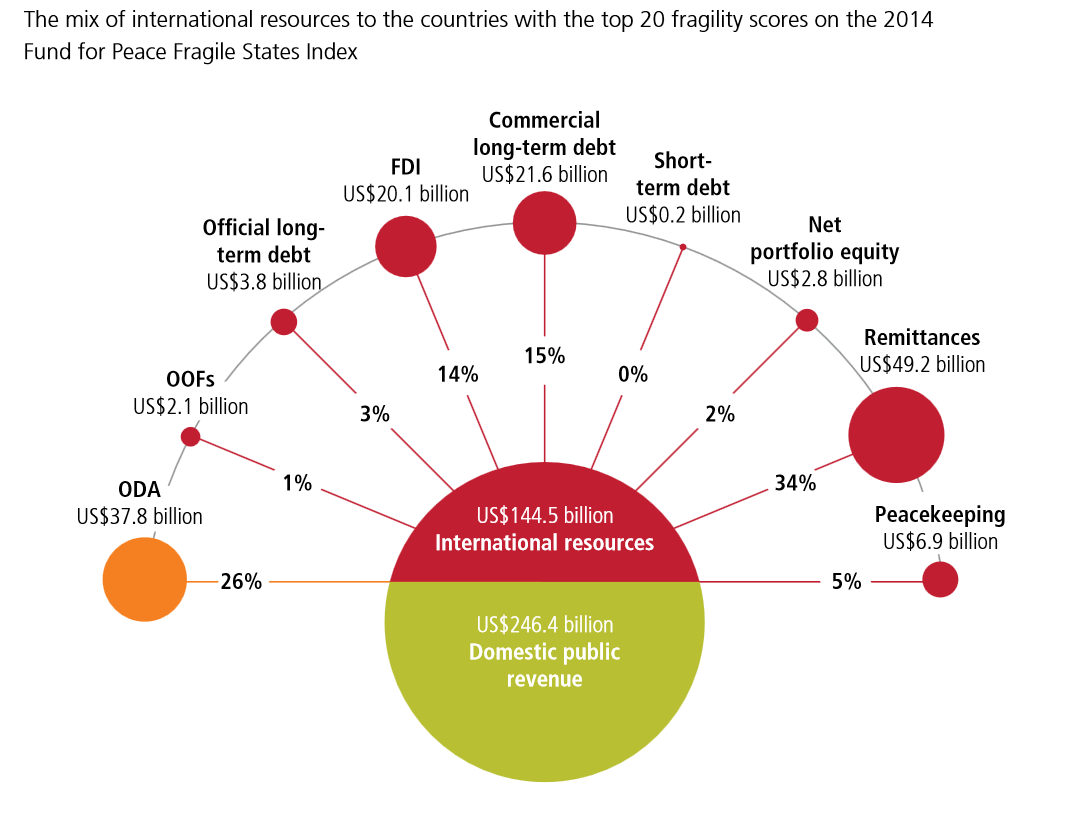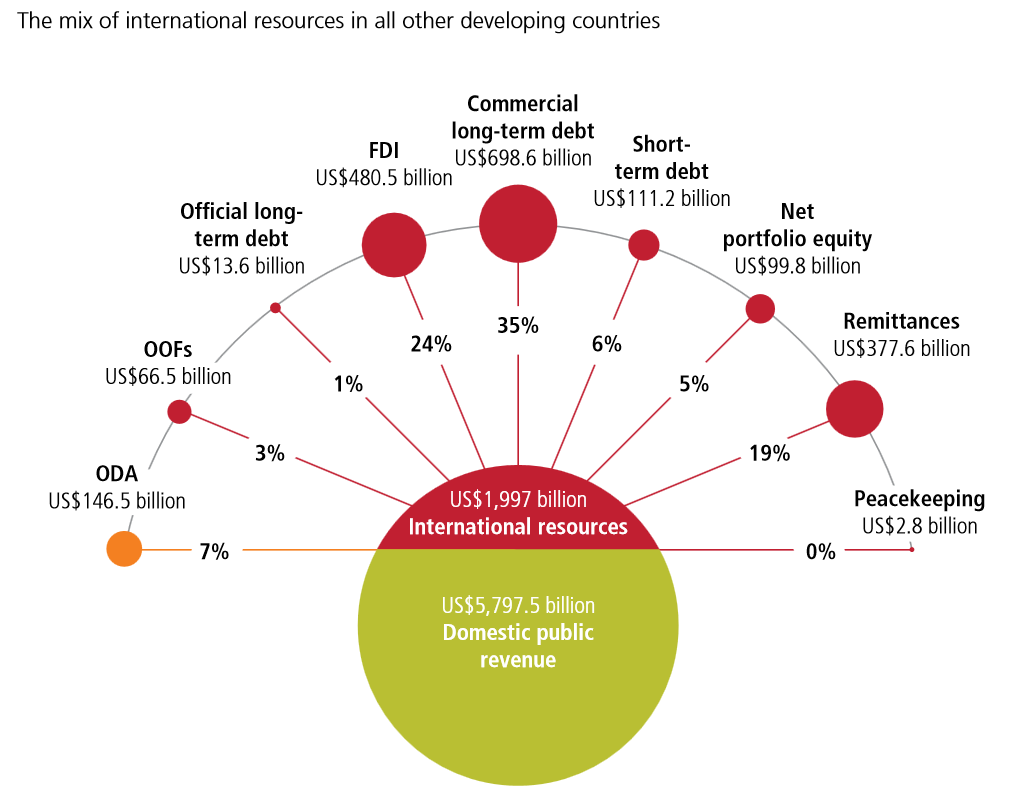Aid as a proportion of international resources is much bigger for fragile states than other developing countries
In 2014, official development assistance (ODA, commonly known as aid) made up a quarter of total international resources for the 20 most fragile countries in the world. This compares with ODA as just 7% of the total international resources that went to all other developing countries (see figures below). This highlights the increasingly important role that ODA plays in meeting the needs of vulnerable people in fragile contexts where national and local capacities are most lacking. For some countries affected by very high levels of instability and conflict, ODA is by far the most dominant international resource, including Afghanistan (83%), Somalia (73%) and Syria (71%).
Source: Development Initiatives’ calculations based on numerous sources (OECD, UNCTAD, International Debt Statistics, World Bank).
Notes: All figures are in 2014 current US$. Negative values are set to zero at the country level. FDI: foreign direct investment; ODA: official development assistance; OOFs: other official flows.
Looking further at the breakdown of resource flows in 2014, official long-term, commercial long-term and short-term debt combined made up only 18% of total inflows to the top 20 fragile countries compared with almost half (42%) of total inflows to all other developing countries. Similarly, foreign direct investment made up just 14% of total inflows to the top 20 fragile countries compared with a quarter (24%) of total inflows to all other developing countries. This reflects the perceived risks and reluctance to invest in fragile and conflict-affected countries.
There are some notable exceptions with Iraq and Chad who receive 72% and 60% of their international resources, respectively, from foreign direct investment despite receiving the highest fragility scores. This is explained by the presence of large extractive industries in these countries.
For more analysis on the mix of resource flows to countries experiencing conflict and fragility please see our report Investments in peace and security.
Related content
Priorities for the UK’s incoming Secretary of State Alok Sharma
As Alok Sharma takes office as Secretary of State, DI's Amy Dodd sets out key priorities for the UK and its global development agenda.
From review to delivery on the Global Goals – what should the immediate priorities be for the UK government?
On 26 June, the UK government published its Voluntary National Review measuring delivery against the Global Goals - but does it accurately capture progress?
Three priorities for the High-level Political Forum 2019
DI Director of Partnerships & Engagement Carolyn Culey sets out three key priorities for closing the gap between the poorest and the rest at HLPF 2019

